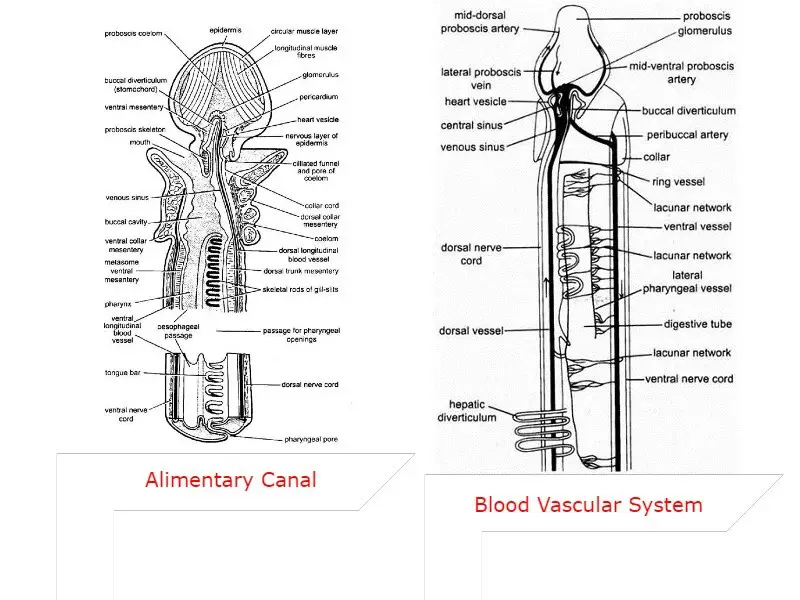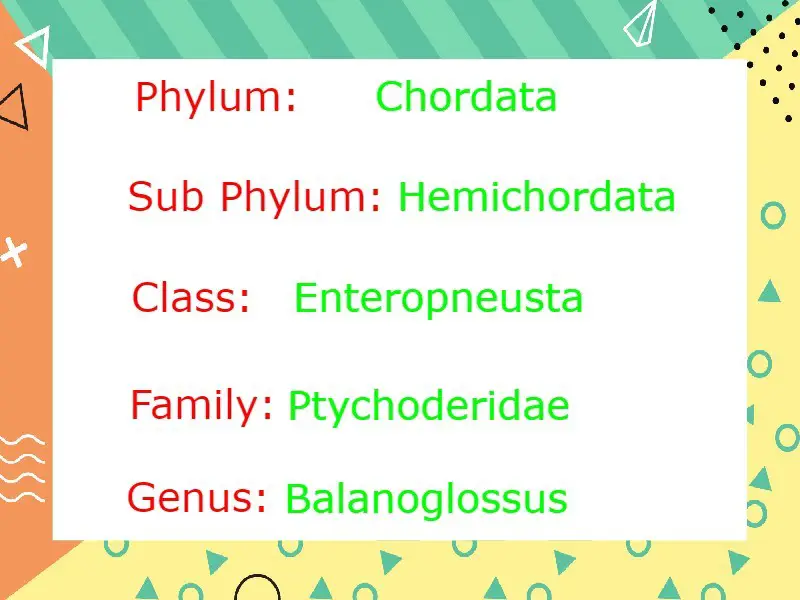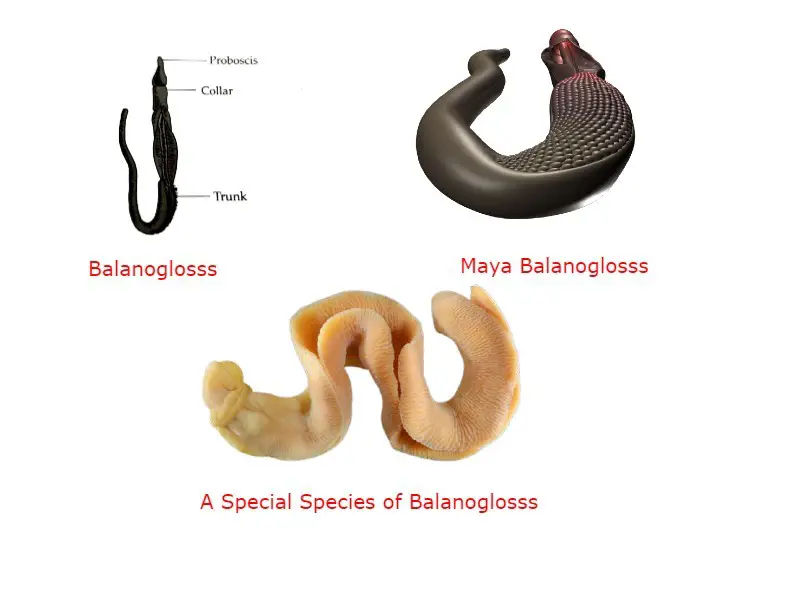Balanoglossus is an important genus of Hemichordata, their body is soft and they are vermiform marine animals, now we will discuss their external morphology in which we focus on the shape of Balanoglossus, size of Balanoglossus, the colour of Balanoglossus, their different regions of the body, collar of Balanoglossus, the trunk of Balanoglossus and proboscis.
Table of Contents
The shape of Balanoglossus:
As they live in marine water so their body has a streamlined fashion like other aquatic animals. The body is soft and its cylindrical worm-like body shows bilateral symmetry.
Size of Balanoglossus:
Their cylindrical body has an average length of 10 cm to 50 cm but in some species, length is around 2 metres as seen in Balanoglossus gigas species.

Colour of Balanoglossus:
Their body colour varies from species to species, body colour is bright in some species and orange or slightly red coloured spots are present on their body.
Detailed Information on What is Balanoglossus: A Tongue Worm
The exoskeleton of Balanoglossus:
Balanoglossus is a soft-bodied animal and they live in burrows but they do not have an exoskeleton to protect them from external mechanical shock, on the body surface cilia are present which helps them in locomotion.
Different Body Parts of Balanoglossus:
From the outside their body can be divided into three parts, anterior proboscis or protosome, middle collar region or mesosome and posterior metasome or trunk region, we will discuss all the portions in detail.
Proboscis or Protosome:
The proboscis or Protosome is the anterior part of the body in Balanoglossus, it is a conical short hollow part that opens outside through proboscis pore. The cavity of proboscis, proboscis coelom opens at the base of proboscis through the proboscis pore present at the base of proboscis mid-dorsally.
At the posterior end of proboscis a narrow proboscis stalk join proboscis with collar region and a U shaped ciliary epidermal depression present there which test the quality of food particles present in the marine water and this ciliary part is known as the preoral ciliary organ.

Collar or Mesosome:
Between the proboscis and trunk, a cylindrical hollow muscular part collar is present which encloses the mouth opening at the base of proboscis stalk. The hollow cavity of the collar is known as collar coelom and this collar coelom open posteriorly through collar pores into the first pair of gill pouches.
The anterior region of the collar which encloses the buccal cavity is known as the collarette and the posterior end of the collar have a circular constriction that separates the collar region from the trunk externally.
Trunk or Metasome:
It is the posterior flat part of the Balanoglossus which is the longest part of the Balanoglossus. On the dorsal side, the trunk has a mid-dorsal ridge and on the ventral side have a mid-ventral ridge, both mid-dorsal and mid-ventral ridge have nerve and blood vessels.
The trunk has three parts, the anterior branchiogenital region, middle hepatic region and posterior posthepatic region, we will give a basic idea of all those three parts of the trunk.
Branchiogenital Region:
This region is known as branchiogenital part because this part has gonads and pores of their branchial system, gill pores open here. Two lateral thin flat longitudinal flaps present laterally which have gonads and two longitudinal lateral rows have gill pores.
Gill pores or branchial pores increase with the age of Balanoglossus, after a certain length of their trunk the genital wings meet together at the mid-dorsal region.

Hepatic Region:
The hepatic region is the greenish middle part of the trunk, the dorsal side of the hepatic caeca process sac-like hepatic cecae and it is smaller than the branchiogenital region of Balanoglossus.
Posthepatic or Caudal or Abdominal Region:
It is the posterior cylindrical part of the trunk which narrow into its posterior end which has an anal opening. The posthepatic region is the longest part of the trunk, this region is also known as a caudal region or abdominal region.
Reference:
Hi Everyone!!! Welcome to Imaluop. Imaluop always try to learn some new and he want to share to other people. Here we will try to learn various topics on Science, specially on Biological Sciences.
